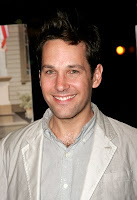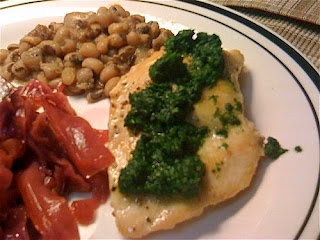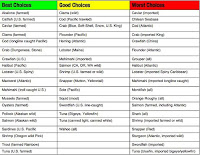That was the call to arms, or at least, the announcement, posted on the website of TBTL, one of my favorite podcasts. TBTL, or Too Beautiful To Live, is a radio show from Seattle. It’s funny, smart, random – sort of like a really fantastic blog, but in radio format – and in the last year I’ve come to have a lot of affection for it and its hosts.
And, for a little more background: Mad Max: Beyond Thunderdome is the third movie in the Mad Max series (I had no idea there was more than one), about Mel Gibson … um, doing stuff … in post-apocalyptic … somewhere. Australia, maybe? I have never seen these movies.
Anyway, the point is, Thunderdome = a scarily near-future world where society’s fallen apart and things are a little more primal, a lot more dangerous, and, ha, isn’t that where things seem to be going with our economic crisis.
 This sort of pop-culture-referencing, topical-yet-not-too-serious sensibility is part of what I love about TBTL. Their Preparing for Thunderdome series sounds like a fun way to acknowledge the economic crisis but have an excuse for adding some silly stuff to the show. (see: Week Two, Fighting in Thunderdome.)
This sort of pop-culture-referencing, topical-yet-not-too-serious sensibility is part of what I love about TBTL. Their Preparing for Thunderdome series sounds like a fun way to acknowledge the economic crisis but have an excuse for adding some silly stuff to the show. (see: Week Two, Fighting in Thunderdome.)But when I heard about the planned Thunderdome Beach Diet, I was … cautious. The plan: for four days, eat on $3/day. (This includes booze, a true test for my beloved TBTL hosts – they ended up just going sober.) It’s not the first eat-on-very-little project I’ve encountered – there’s the One Dollar Diet Project, 30 Bucks a Week, even Oregon Governor Ted Kulongoski. But I was mostly concerned because of how many people (hi, this is me) eat on a limited budget daily. Not as a project. Not as a whoa, this is crazy, can’t wait till it’s over and we get to go back to normal sort of thing.
Because I’m one of those people, the people who think about how much we’re spending on food all the time. Sometimes I splurge, but my bank account feels it. It’s never carefree, never just oh, whatever I want. It’s: well, if I buy this, then I can’t see a movie this weekend, or I have some soup in my freezer, so I guess I can go out for a drink. I didn’t want this project, and the way TBTL handled it, to be about emphasizing the distance between their lives and mine, and I was sure I couldn’t be the only listener feeling that.
I was also hearing a lot of talk about ramen, and if I’ve learned one thing from reading, and then writing for, this website, it’s that you can eat really cheaply and still get vegetables and protein and whole foods and general healthiness. Unless you’re in college, talking about ramen means this isn’t a real way to eat.
And so last week, the hosts of TBTL went on The Thunderdome Beach Diet, living on $12 for four days. Three people are on the show – host Luke, producer Jen, and engineer Sean. And each took a different approach.
Sean bought milk and cereal, and ingredients for a giant egg, cheese, and rice casserole that he ate for the week. Luke bought eggs, tortillas, beans, jalapenos, a bag of salad greens, and some cheap chicken thighs that turned out to be mostly bone. And Jen… well, Jen had surprise dental surgery in the middle of the week, but I think her plan was a lot of rice, eggs, and canned green beans.
Hearing those menus, first of all, made me seriously appreciate how much I’ve learned in the year or two I’ve made eating cheaply a priority. (Well, I’ve made paying off my damn credit cards a priority, and in order to do so, I eat cheap. And in order to be healthy-ish, I don’t live on ramen.) Some TBTL listeners did the diet along with the hosts, and the hosts were shocked at what people were eating for $3 a day – tasty sandwiches and hot chocolate and homemade popcorn. But when you know how to cook from scratch, from ingredients, you save so much money. Every time they described a meal of canned beans or milk and cold cereal, I thought of what you can save cooking with dried beans, or how much more filling and healthy a bowl of oatmeal can be (and cheaper, too, I think), or how you can buy flour and make your own tortillas.
 But this is knowledge that we’re not born with, that we don’t pick up in school or even necessarily from our parents. Thank goodness for the internet, and its gift of sixty-cents-a-serving lentil soup, and bless the $1.50 bag of frozen spinach.
But this is knowledge that we’re not born with, that we don’t pick up in school or even necessarily from our parents. Thank goodness for the internet, and its gift of sixty-cents-a-serving lentil soup, and bless the $1.50 bag of frozen spinach.That was my main takeaway – gratitude and appreciation for the knowledge I’ve gained, the skills and awareness that’ve changed how I look at food – at what I eat, what I buy, the way I spend my time (cooking). But what did the TBTLers learn?
Wrap-up included a lot of “It’s amazing (and shocking) that people live like this all the time.” Luke said something at one point about how it made him realize that having money means not needing to be careful – if the chicken’s gross, he can go out to eat; if the eggs break, he can go buy more. But not in Thunderdome! As much as I can think he’s naïve or sheltered to have never realized that before (and he happens to have grown up without a lot of money), maybe I’m naïve to assume that everyone should have that sort of awareness, or that everyone should already know how to eat cheaply without resorting to ramen or fatiguing repetition.
Sean was pretty happy with his week of casserole, although he readily admitted he couldn’t eat like that forever, but Jen felt a strong emotional drag from her diet. Not to have choice, not to have indulgence, not to get the pleasure she was used to from her favorite wine or tasty cheese and crackers – it really brought her down. I wanted to be able to reach through the radio and say, “It doesn’t have to be that way! There is variety! There are vegetables!” But also: “Dude, I totally understand.”
But, of course, after Friday, the TBTLers went back to their previous ways – their bigger budgets and different concerns. And those of us living on a little less are still eating with what money we have. But The Thunderdome Beach Diet made me realize that what I know, what I know how to do, is, in a weird way, sort of special. Like I have this secret knowledge, the key to unlocking the grocery store or whatever, a magic spell that turns a beans-and-eggs budget into kale and delicious soup and chocolate. (I totally budget for good chocolate.) And as much as it’s most of the time a huge pain in the butt, it’s good to remember that it’s kind of awesome, too.
(Photos courtesy of Spartan Tailgate and Ning.)





 1:30 PM
1:30 PM
 ari sari
ari sari

 Posted in:
Posted in: 







 2 1/2 c wheat bran
2 1/2 c wheat bran








